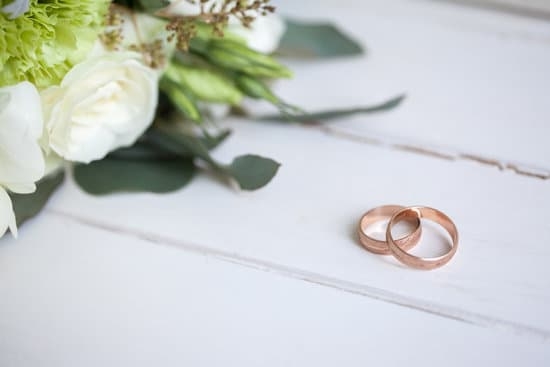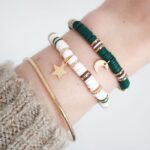Are you passionate about creating handmade jewelry? Do you have innovative designs in mind that you want to bring to life? In this article, we will explore the essential steps on how to make a prototype of handmade jewelry.
From choosing the design to refining the details and showcasing the final result, creating a prototype is a crucial part of the design process. Whether you are an aspiring jewelry designer or an experienced artisan, understanding the importance of prototyping can significantly impact the success of your creations.
When it comes to crafting handmade jewelry, having a prototype allows you to visualize and test your design ideas before producing them on a larger scale. It serves as a tangible representation of your vision, enabling you to experiment with different materials, shapes, and techniques.
By creating a prototype, you can ensure that your design meets quality standards and resonates with your target audience’s preferences. In this article, we will delve into the intricacies of making a prototype for handmade jewelry and provide valuable insights into each step of the process.
The first step in making a prototype for handmade jewelry is choosing the design. This involves careful consideration of current market trends, your target audience’s tastes, and personal creative preferences. Once you have selected a design, gathering suitable materials such as metals, gems, beads, and wires becomes essential.
Sketching and planning the prototype design then follows before finally constructing the physical prototype using various techniques for shaping and soldering. Throughout this process, attention to detail is crucial in refining intricate aspects that enhance the overall aesthetic appeal of the finished piece. Testing its functionality and durability helps identify any necessary revisions before finally presenting it through various marketing strategies.
Choosing the Design
Selecting the right design for a handmade jewelry prototype is a crucial step in the overall creative process. When determining which design to pursue, it is important to consider various factors such as current market trends and the target audience. Understanding these elements can influence not only the design itself but also the success of the final product.
First and foremost, designers should research and analyze current market trends in the jewelry industry. This helps in identifying popular styles, materials, and colors that are currently in demand. By staying informed about market trends, designers can create prototypes that have a higher chance of resonating with potential customers.
In addition to market trends, understanding the target audience for the handmade jewelry is essential. Consideration should be given to factors such as age, gender, lifestyle, and personal preferences. For example, a prototype targeting a younger demographic may feature more vibrant and contemporary designs compared to one targeting an older audience.
Moreover, feedback from potential customers can also play a vital role in refining the design process. Surveys and focus groups can provide valuable insights into what potential buyers are looking for in handmade jewelry. Based on this information, designers can make informed decisions when selecting a design for their prototypes.
| Factors to Consider | Information |
|---|---|
| Market Trends | Identify popular styles, materials, and colors |
| Target Audience | Consider age, gender, lifestyle, and preferences |
| Customer Feedback | Surveys and focus groups provide valuable insights |
Gathering Materials
When it comes to creating a prototype of handmade jewelry, one of the most crucial steps is gathering the necessary materials and tools. The success of your prototype will heavily depend on the quality and variety of materials you choose. From metals to gems, beads, and wires, each element plays a significant role in bringing your design to life.
Types of Metals
The first consideration when gathering materials for your handmade jewelry prototype is the type of metal you plan to use. Common options include gold, silver, platinum, and copper. Each metal has its unique properties and characteristics that can impact the overall look and feel of your jewelry piece.
Gems and Beads
Another essential component of handmade jewelry prototypes are gems and beads. These decorative elements add color, texture, and visual interest to your design. When choosing gems or beads for your prototype, consider factors such as size, shape, color, and clarity to ensure they align with your overall vision for the piece.
Tools
In addition to materials, having the right tools is essential for creating a successful prototype. Tools such as wire cutters, pliers, soldering equipment, and shaping tools are just a few examples of what you may need. Investing in high-quality tools will not only make the construction process smoother but also ensure precision and accuracy in your work.
Understanding how to make a prototype of handmade jewelry requires careful consideration of materials and tools. By selecting high-quality metals, gems, beads, and utilizing the right tools for the job, you can set yourself up for success in bringing your design concept to life with a refined prototype that accurately represents your vision.
Sketching and Planning
When creating a prototype for handmade jewelry, the initial phase of sketching and planning is crucial in bringing the design concept to life. Whether using design software or traditional sketching techniques, this step sets the foundation for the entire production process. Here are some key steps and considerations for successfully sketching and planning a handmade jewelry prototype:
- Brainstorming Design Ideas: Begin by brainstorming different design ideas and concepts that align with market trends and appeal to your target audience. Consider factors such as color schemes, shapes, sizes, and potential materials to be used.
- Creating Initial Sketches: Once you have a clear idea of your design concept, start creating initial sketches or drawings to visualize the jewelry piece. This can be done on paper or digitally using design software such as CAD (Computer-Aided Design) programs.
- Refining the Designs: After creating initial sketches, take the time to refine and iterate on your designs. Consider feedback from peers or industry professionals, and make adjustments to improve the overall aesthetic and functionality of the prototype.
When using design software for prototyping, take advantage of features that allow for 3D rendering and virtual visualization of the jewelry piece. This can provide a more detailed understanding of how the final product will look and function. On the other hand, traditional sketching techniques offer a more hands-on approach that allows for creative freedom and experimentation.
Constructing the Prototype
Gathering Materials
Before you begin constructing your handmade jewelry prototype, it is essential to gather all the necessary materials and tools. The type of materials you choose will depend on the design you have selected, as well as the overall aesthetic you want to achieve.
This could include different types of metals such as gold, silver, or brass, as well as gemstones, beads, and wires. It’s important to ensure that the materials are of high quality to create a prototype that accurately represents the final product.
Assembling the Materials
Once you have gathered all the required materials, it’s time to start assembling them based on your design plan. You might need to use jewelry-making tools such as pliers, cutters, and soldering equipment to shape and connect the different elements together.
It’s important to pay attention to detail during this process to ensure that each component is properly aligned and secured. Additionally, understanding basic metalworking techniques like bending, shaping, and soldering will be crucial in bringing your prototype to life.
Creating Physical Prototype
After assembling all the materials together according to your design plan and using various jewelry-making techniques such as shaping and soldering, you can now create the physical prototype of your handmade jewelry. This step involves carefully putting together each individual element to form a cohesive and visually appealing piece of jewelry. All aspects should be considered including weight distribution, balance alignment among many techniques used in traditional silversmithing unique molds are incorporated until desired product is created.
By following these step-by-step instructions on how to construct a prototype for handmade jewelry, one can bring their unique designs into physical form creating an accurate representation before final production commences. Properly constructed prototypes present better understanding in reference production cycling from possible hindrances or setbacks saving on long-term costs preventing oversights prior mass production while seeking greater market objective accomplishment with distinctive unique pieces made by oneself or those apart of team efforts.
Refining the Details
When creating a handmade jewelry prototype, refining the details is a crucial step in enhancing the overall aesthetic and ensuring that the final product meets the desired design. Here are some important considerations when refining the prototype:
1. Intricate Details:
Adding intricate details to the prototype can elevate its visual appeal and make it stand out. This can include using delicate filigree work, intricate engraving, or tiny embellishments like small gemstones or pearls.
2. Textures:
Incorporating textures into the design can give the prototype depth and dimension. Consider using techniques such as hammering, texturing hammers, or metal stamping to create unique surface textures that add visual interest to the piece.
3. Embellishments:
Embellishments like chains, tassels, or charms can enhance the overall look of the prototype. It’s important to carefully consider where and how to incorporate these embellishments so they complement the design without overwhelming it.
Once these details have been added to the prototype, it’s essential to evaluate their impact on the overall design. Are they enhancing or detracting from the intended aesthetic? Testing different combinations of details and textures can help determine what works best for the finished piece.
By refining these details, jewelry designers can ensure that their handmade prototypes accurately reflect their vision for a unique and visually captivating piece of jewelry.
Overall, this step proves integral in producing a high-quality handmade jewelry piece that will appeal to a target audience and stand out in a crowded market.
Testing and Revising
Creating a prototype for handmade jewelry is an essential step in the design and production process. Once you have constructed the physical prototype, it is crucial to test its functionality and durability. Testing the prototype allows you to identify any potential issues or areas for improvement before moving forward with mass production. This ensures that the final product meets quality standards and customer expectations.
One way to test the functionality of a handmade jewelry prototype is to wear it for an extended period of time. This allows you to assess its comfort, fit, and usability in everyday situations. Additionally, you can evaluate the prototype’s durability by subjecting it to different conditions, such as exposure to water, sunlight, or physical impact. This helps determine how well the jewelry holds up over time and under various circumstances.
After conducting thorough testing, it is important to review the findings and make any necessary revisions to the prototype. This may involve adjusting the design, materials, or construction techniques to address any identified issues. By carefully analyzing the test results and implementing revisions as needed, you can refine the prototype to ensure that it meets your desired specifications and quality standards.
In summary, testing and revising are critical steps in the prototype development process for handmade jewelry. By thoroughly evaluating the functionality and durability of the prototype and making any necessary revisions, you can create a final product that not only meets your design vision but also provides customers with high-quality jewelry that they can enjoy for years to come.
| Functionality Testing | Durability Testing |
|---|---|
| Wearing prototype for extended periods | Subjecting prototype to water exposure |
| Evaluating comfort and usability | Assessing impact resistance |
| Assessing fit in everyday situations | Evaluating longevity under sunlight |
Showcasing the Result
Once you have completed your handmade jewelry prototype, it’s important to showcase the finished product in a way that highlights its unique design and craftsmanship. One of the most effective ways to present the prototype is through high-quality photography. Invest in a professional photographer or learn how to take high-quality images yourself. Capture close-up shots of the intricate details and textures of the jewelry to truly showcase its beauty.
In addition to photography, branding plays a crucial role in presenting your handmade jewelry prototype. Consider creating a compelling brand story that communicates the inspiration behind your designs and the values of your brand. This will help establish an emotional connection with potential customers and differentiate your jewelry from mass-produced pieces.
Furthermore, implementing effective marketing strategies is essential in showcasing your handmade jewelry prototype. Utilize social media platforms such as Instagram and Facebook to share visually appealing images of your prototype and engage with potential customers. Consider hosting pop-up events or collaborating with local boutiques to introduce your handmade jewelry to a wider audience.
By strategically showcasing the finished prototype through photography, branding, and marketing strategies, you can effectively communicate the uniqueness and quality of your handmade jewelry to potential customers. These efforts are vital in building brand awareness and generating interest in your designs within the competitive market for handcrafted jewelry products.
Conclusion
In conclusion, creating a prototype for handmade jewelry is an essential step in the design and production process. By following the steps outlined in this article, designers can ensure that their vision for a piece of jewelry is brought to life in a way that meets both their creative vision and the expectations of their target audience.
From choosing the right design to refining the details and testing the functionality, each step plays a crucial role in creating a successful prototype.
This article has highlighted how to make a prototype of handmade jewelry by emphasizing the importance of careful planning, gathering quality materials, and investing time in sketching and constructing the physical prototype. It is through this meticulous process that designers can truly bring their unique designs to life and test them for both aesthetic appeal and durability.
Ultimately, creating a handmade jewelry prototype allows designers to showcase their creativity while also ensuring that their final product meets high standards of quality. By taking the time to create a prototype, designers can make necessary revisions and refinements before moving into full-scale production, saving both time and resources in the long run. This thorough approach not only contributes to better design outcomes but also adds value to the final product, making it more appealing to potential customers.
Frequently Asked Questions
What Is a Jewelry Prototype?
A jewelry prototype is a preliminary model or sample of a piece of jewelry that is created to test and visualize the design before moving forward with production. It allows designers to see how the piece will look and make necessary adjustments.
What Is the Process of Designing Jewelry?
The process of designing jewelry typically begins with brainstorming and sketching out ideas on paper. Once a design concept is chosen, it is then rendered using computer-aided design (CAD) software to create a detailed digital model. From there, materials are selected, and the prototype is created using traditional or rapid prototyping methods.
What Are the Applications of Rapid Prototyping in Jewellery Industry?
Rapid prototyping in the jewelry industry has various applications, including the ability to quickly produce prototypes for new designs, test different variations of a design, and create custom pieces for clients. This technology allows for faster turnaround times and more efficient production processes, ultimately saving time and reducing costs for jewelry makers.
Additionally, rapid prototyping enables designers to experiment with intricate and complex designs that may be challenging to create using traditional methods.

Welcome to my jewelry blog! My name is Sarah and I am the owner of this blog.
I love making jewelry and sharing my creations with others.
So whether you’re someone who loves wearing jewelry yourself or simply enjoys learning about it, be sure to check out my blog for insightful posts on everything related to this exciting topic!





